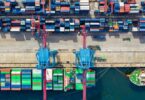Quiz on Protectionism in Trade:
Which of the following is a potential consequence of protectionist measures?
(a) Increased international cooperation and trade agreements.
(b) Reduced consumer choices and higher prices for imported goods.
(c) Rapid economic growth and enhanced job opportunities.
(d) Strengthened global supply chains and decreased trade imbalances.
What is a common tool of protectionism used by governments to limit imports?
(a) Export subsidies
(b) Tariffs
(c) Free trade agreements
(d) Multinational treaties
What is protectionism?
(a) An economic policy that promotes unrestricted trade between nations.
(b) A philosophy advocating for the elimination of all trade barriers.
(c) Government policies and measures that restrict foreign trade to protect domestic industries.
(d) A strategy to encourage foreign investment and open markets.
What is a common objective of protectionist policies?
(a) Maximizing international trade volumes.
(b) Promoting cultural exchange between nations.
(c) Boosting competition among domestic producers.
(d) Shielding domestic industries from foreign competition.
How might protectionism impact global trade relationships?
(a) It fosters strong collaborative trade agreements.
(b) It encourages equal distribution of resources.
(c) It can lead to trade tensions and conflicts between nations.
(d) It ensures complete market liberalization.
Related: Stock Technical Analysis Quiz
Which potential advantage is often associated with protectionism?
(a) Increased consumer choices and variety of imported goods.
(b) Greater competition leading to lower domestic prices.
(c) Protection of domestic industries and preservation of jobs.
(d) Facilitate international cooperation and trade agreements.
How can protectionism potentially benefit a country’s national security?
(a) By relying solely on imports to meet essential needs.
(b) By fostering strong diplomatic ties with neighboring nations.
(c) By reducing dependence on foreign suppliers for critical goods and resources.
(d) By embracing global trade without any restrictions.
What is a potential economic advantage of protectionism for developing nations?
(a) Increased access to advanced technologies from developed countries.
(b) Enhanced ability to attract foreign direct investment.
(c) Protection of infant industries and promotion of domestic growth.
(d) Elimination of trade imbalances through open markets.
What is a potential drawback of protectionism?
(a) Strengthening domestic industries and promoting economic growth.
(b) Encouraging healthy competition and innovation among producers.
(c) Hindering international trade and reducing consumer choices.
(d) Fostering collaborative trade agreements between nations.
How might protectionism affect a country’s overall economic efficiency?
(a) It enhances resource allocation and productivity.
(b) It can lead to inefficiencies by sheltering uncompetitive industries.
(c) It streamlines production processes for domestic goods.
(d) It reduces unemployment rates and promotes workforce mobility.
Related: principles of macroeconomics questions and answers
How can protectionism potentially impact global diplomatic relations?
(a) It fosters stronger cooperation and trust among nations.
(b) It can lead to trade disputes, tensions, and potential conflicts.
(c) It promotes open dialogue and mutual understanding.
(d) It eliminates the need for international trade agreements.
Which of the following is a common form of protectionism in trade?
(a) Eliminating all tariffs and quotas on imports.
(b) Subsidizing domestic industries to promote competition.
(c) Encouraging foreign investment without any restrictions.
(d) Establishing free trade agreements with multiple nations.
How might protectionist measures affect a country’s consumers?
(a) It leads to increased access to imported goods and lower prices.
(b) It may limit product choices and result in higher prices for particular items.
(c) It encourages international competition and reduces local markets.
(d) It ensures stable supply chains and consistent availability of goods.
What is the primary difference between free trade and protectionism?
(a) Free trade promotes government intervention, while protectionism advocates for open markets.
(b) Free trade emphasizes unrestricted movement of goods, while protectionism aims to limit imports.
(c) Free trade benefits only developing nations, while protectionism benefits developed nations.
(d) Free trade encourages currency devaluation, while protectionism focuses on stable exchange rates.
Which statement best describes the potential benefit of free trade?
(a) Protection of domestic industries from foreign competition.
(b) Increase in tariffs and quotas on imports to safeguard local jobs.
(c) Promotion of healthy competition and innovation among producers.
(d) Focus on subsidizing industries to maintain high employment rates.
Related: Questions on Inflation
How might protectionism impact a country’s economic growth compared to free trade?
(a) Protectionism generally leads to higher economic growth due to reduced competition.
(b) Protectionism and free trade have similar effects on economic growth.
(c) Free trade usually leads to higher economic growth by fostering specialization and efficiency.
(d) Economic growth remains unaffected by both protectionism and free trade.
Which of the following is an example of protectionism?
(a) Signing a free trade agreement with neighboring countries.
(b) Implementing high tariffs on imported automobiles to boost domestic car manufacturing.
(c) Promoting foreign direct investment to enhance global economic integration.
(d) Advocating for the elimination of all trade barriers and restrictions.
What does a government subsidy to a domestic industry represent?
(a) A form of protectionism aimed at encouraging imports.
(b) An effort to reduce government spending on trade-related programs.
(c) A measure to promote healthy competition and innovation.
(d) A protectionist practice supporting the growth of local businesses.
How do import quotas serve as an example of protectionism?
(a) By promoting unrestricted foreign trade and open markets.
(b) By limiting the quantity of specific goods that can be imported.
How has China implemented protectionist measures in recent years?
(a) By significantly reducing tariffs on imported goods.
(b) By actively promoting foreign investment in all sectors.
(c) By imposing tariffs on certain imported products to protect domestic industries.
Related: economic growth and development quiz
What is an example of China’s protectionist policy related to technology and cybersecurity?
(a) Offering foreign companies tax incentives to invest in China.
(b) Implementing open-door policies for foreign technology firms.
(c) Restricting access to specific foreign social media platforms and search engines.
(d) Providing free licenses to foreign companies for Chinese patents.
How has China’s protectionist approach impacted its trade relationships with other countries?
(a) It has led to increased collaboration and trade agreements.
(b) It has caused trade tensions and disputes with several nations.
(c) It has resulted in the complete elimination of trade barriers.
(d) It has fostered unrestricted movement of goods and services.
How does protectionism affect a country’s domestic industries?
(a) It enhances competition and innovation among domestic producers.
(b) It reduces the need for government subsidies and support.
(c) It shields industries from foreign competition, potentially leading to inefficiencies.
(d) It promotes international cooperation and collaboration.
Which economic concept is often associated with protectionism?
(a) Comparative advantage
(b) Trade surplus
(c) Currency appreciation
(d) Tariff reduction
How might protectionist policies impact consumer prices within a country?
(a) Prices of imported goods may decrease due to reduced competition.
(b) Prices of domestic goods may increase due to limited foreign competition.
(c) Prices of all goods remain unaffected by protectionist measures.
(d) Protectionism has no impact on consumer prices.
During which historical period did the United States adopt significant protectionist policies?
(a) The Roaring Twenties
(b) The Progressive Era
(c) The Great Depression
(d) The Civil Rights Movement
Which trade agreement was renegotiated by the United States under the Trump administration, citing concerns about American industries and jobs?
(a) NAFTA (North American Free Trade Agreement)
(b) WTO (World Trade Organization)
(c) EU-US Free Trade Agreement
(d) TPP (Trans-Pacific Partnership)
How did the Smoot-Hawley Tariff Act of 1930 impact U.S. international trade?
(a) It led to increased exports and economic growth.
(b) It eliminated all tariffs on imported goods.
(c) It triggered retaliatory tariffs from other countries and worsened the Great Depression.
(d) It resulted in the establishment of free trade agreements with multiple nations.
What is the primary goal of globalization in the context of international trade?
(a) To protect domestic industries from foreign competition.
(b) To restrict the flow of goods and services across borders.
(c) To promote economic integration, open markets, and increased international trade.
(d) To prioritize self-sufficiency and minimize reliance on global supply chains.
How does protectionism differ from globalization in trade policy?
(a) Protectionism seeks to reduce barriers to international trade, while globalization aims to restrict it.
(b) Protectionism advocates the free movement of goods and services, while globalization focuses on shielding domestic industries.
(c) Protectionism emphasizes national self-interest and limits foreign competition, while globalization fosters global economic interdependence.
(d) Protectionism encourages multinational treaties, while globalization supports bilateral trade agreements.
What is a potential consequence of excessive protectionism in the context of globalization?
(a) Enhanced global economic stability and balanced trade relations.
(b) Reduced opportunities for cross-cultural exchanges and international cooperation.
(c) Increased consumer choices and lower prices for imported goods.
(d) Streamlined production processes and efficient allocation of resources.
Related: MCQs about Fundamental Forensic Accounting
How could protectionism impact international relations within the oil industry?
(a) It may foster collaborative efforts among oil-producing nations to stabilize prices.
(b) It often leads to increased global oil supply and lower prices.
(c) It typically results in a decrease in diplomatic negotiations and agreements.
(d) It may trigger trade disputes and tensions among oil-exporting and oil-importing countries.
What is the primary purpose of import tariffs as a form of protectionism?
(a) To encourage foreign investment and boost domestic industries.
(b) To promote unrestricted trade and open markets.
(c) To generate government revenue and fund public programs.
(d) To limit imports and protect domestic industries from foreign competition.
How does an import quota function as a protectionist measure?
(a) By providing tax incentives to domestic producers.
(b) By encouraging foreign investments in local markets.
(c) By placing a limit on the quantity of specific goods that can be imported.
Which of the following is an example of non-tariff barriers used in protectionism?
(a) Subsidies provided to foreign industries.
(b) Currency appreciation to boost export competitiveness.
(c) Intellectual property rights enforcement to restrict foreign competition.
(d) Reduction of domestic taxes to encourage international trade.
How can protectionist measures potentially impact a country’s trade deficit?
(a) Protectionism usually leads to an increase in imports and a lower trade deficit.
(b) Protectionism can lead to a reduction in exports and an increase in the trade deficit.
(c) Protectionism does not affect a country’s trade deficit.
(d) Protectionism always results in a balanced trade deficit.
How might a trade deficit influence a country’s consideration of protectionist policies?
(a) A trade deficit usually leads to a decrease in protectionist measures.
(b) A trade deficit often prompts a country to promote even more free trade.
(c) A trade deficit may result in a country implementing protectionist policies to reduce imports.
(d) A trade deficit has no bearing on a country’s trade policies.
Related: Questions about Amber Trade Route
What is a potential criticism of using protectionism to address a trade deficit?
(a) Protectionism is guaranteed to eliminate the trade deficit.
(b) Protectionism can lead to retaliation from trading partners, exacerbating the issue.
(c) Protectionism has no impact on a country’s overall economic situation.
(d) Protectionism encourages free trade and cooperation among nations.






